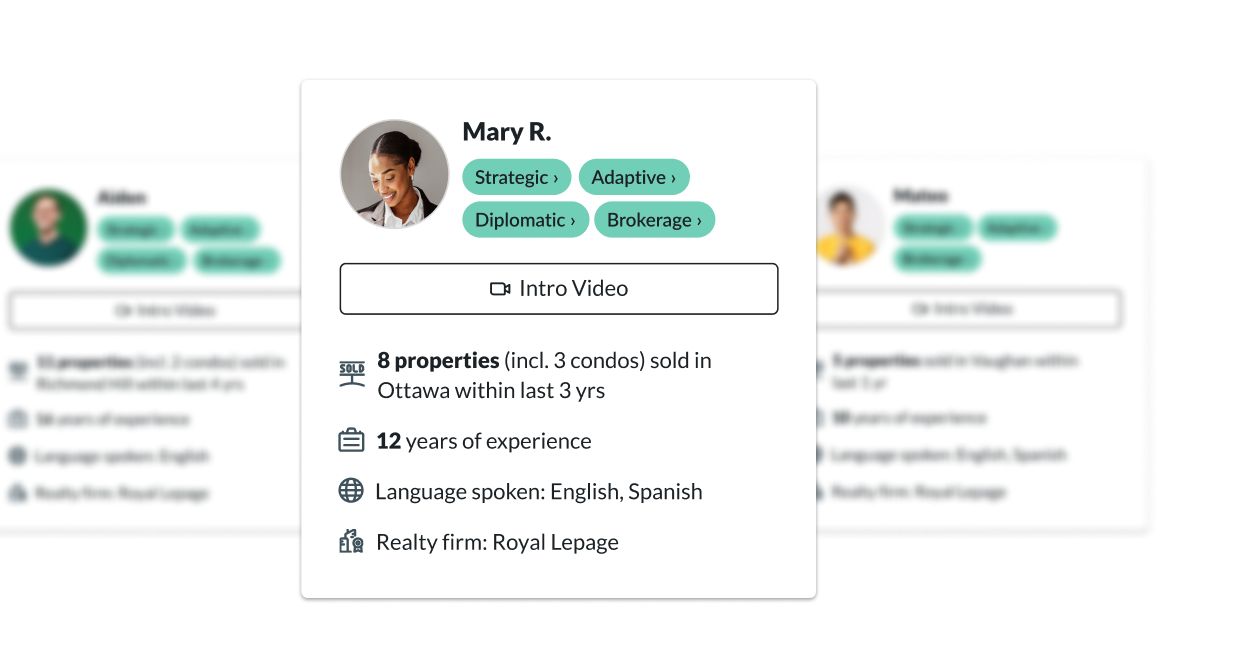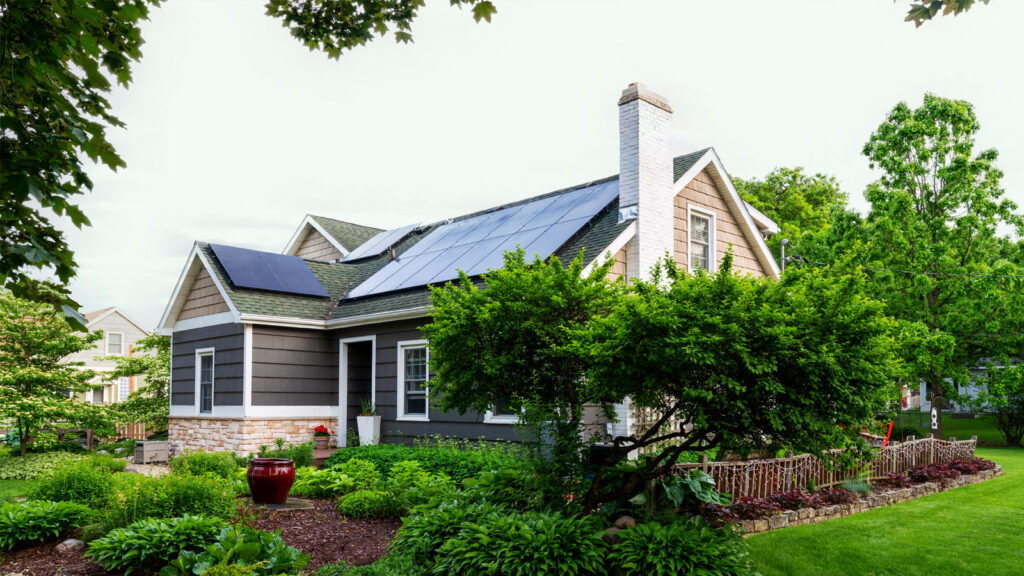Home Showing Checklist
You’ve found the perfect property using the Wahi app. Now what? Book a showing instantly and follow these 7 steps when touring a home.
By Kristin Doucet | 6 minute read

When you’re touring a home, don’t get caught up on the characteristics that aren’t permanent, such as furniture, decor, fixtures, wall and floor treatments, and even bathroom and kitchen design.
Buying a home is one of the most important and biggest financial decisions you’ll ever make. Wahi wants to help you get so in the know on all things homebuying, so we’ve created this checklist so you know how to prepare for a home tour and what to look for while touring a home.
1. Get to know the neighbourhood
Wahi listings are full of valuable intel including school scores, nearby amenities and how the neighbourhood ranks for transit, walkability and other attributes. But the best way to really get a sense of the neighbourhood is to see it yourself. Observe how quiet or noisy the area is at different times of the day and evening, and talk to neighbours about the pros and cons of the neighbourhood.
2. Invite a friend
In addition to your Realtor, bring a trusted friend, family member, and/or contractor for an objective perspective. If you’ve already got renovations in mind, a contractor can provide a professional opinion on what may or may not be possible and the potential costs. They can assess whether the house has “good bones” — whether it’s structurally sound. If you’ve got children, consider getting a babysitter so you can focus on the property without any distractions.
3. Prioritize your current and future needs
The search for the right home is probably the longest part of the homebuying process. Knowing what you need, want and don’t want in a home will help you narrow your search. Think about your must-haves, nice-to-haves and those things you absolutely don’t want.
If you’re planning to have a family, consider the number and size of bedrooms and whether your home will grow with you or whether you’ll outgrow your home. For older homebuyers, consider the number of stairs and whether a home’s layout could be problematic 20 years from now. The layout and room dimensions can also affect furniture placement. For example, a smaller primary bedroom may not accommodate your brand new California King bed. So be sure to bring a measuring tape.
Also consider storage. Take note of the amount of closet and pantry space, and don’t underestimate how much storage you actually need or may need in the future if your family grows.
“It’s not uncommon to ask questions about the home that may not be covered in the feature sheet.”
4. Take photos and make notes on your phone
If you end up seeing several homes in a week, it’s easy to forget all the details. Keeping notes, including questions for the owner and/or home inspector, and keeping track of any potential problems you see will make it easier to recall the details. If you plan to take photos or videos, be sure to get permission from the seller via your agent beforehand.
Be sure to take photos and make notes of the following:
- Odours — a bad smell can be indicative of a bigger problem, such as mildew or mold.
- The condition of the walls, ceiling, floors and roof — while a home inspection will uncover any hidden defects, look for obvious water damage or sloping of the ceiling or floor. Take note of the type of roof and when it was last repaired. Flat roofs tend to be more expensive than sloped, and some roofing materials are more durable than others.
- Electrical system — The Knob and tube system, commonly found in older homes, may need to be replaced for insurance purposes. Some insurance companies will refuse to insure a home if it has knob and tube due to the risk of fire. Electric baseboard heaters also tend to be more expensive when it comes to heating a home, compared to gas.
- Appliances — are they in good working condition? It may be hard to tell at first glance but take photos of the model types and serial numbers to determine their age and rating.
- Outdoor space & orientation — If touring a home with a yard, take note of the condition of the grass, trees and any other existing vegetation. The orientation of the home will also determine how much sunlight the yard gets. The same is true for inside the home. Visiting a home at different times of the day will give you a good idea of the amount of natural light that comes in throughout the day.
5. Look at the home’s energy efficiency
Everything from windows to the HVAC system can determine how energy efficient a home is and the direct impact the level of efficiency will have on the utility costs. While a home inspection will uncover any serious deficiencies in the HVAC system and other areas, there are still things you should look for when visiting a home. For instance, how old is the water heater and furnace? Is it rented, owned or financed? It’s important to understand your obligations if any of the HVAC’s components have been rented or financed. For example, if you buy a home that has a furnace rental contract, you need to decide if you are going to transfer the contract to yourself or buy a furnace. Ask the owner what the monthly bills are.
Windows are another determining factor of a home’s efficiency. Check if the windows are single or double pane. Single panes tend to exist in older homes and are not as energy efficient as double panes. And while windows can certainly be replaced, it can be costly.

Find the Right REALTOR® for You
We'll match you with a proven agent in your area.
6. To renovate or not?
As you move through a house, be honest with yourself about whether you have the stomach for a full or part renovation or if you would rather buy a home that is move-in ready. If you know you’re not cut out for the reno life, be sure you can live with someone else’s tastes. Envision yourself in the space and listen to your gut.
7. Ask more questions
It’s not uncommon to ask questions about the home that may not be covered in the feature sheet. Your Realtor can reach out to the listing agent for additional information and to ask questions such as, why are the sellers moving? How many offers have been made? Has the home been previously renovated and when? Are there any issues with the property? When was the home built?
What not to consider
Don’t get caught up on the characteristics of the home that are not permanent, such as furniture, decor, fixtures, wall and floor treatments, and even bathroom and kitchen design. Instead, focus on the more permanent details such as structure — the “bones” of the house. Elements like carpeting, fixtures, and flooring can be replaced.
Next steps
After you’ve toured homes you like, regroup with your Realtor to discuss the pros and cons of each home in detail. If you’ve set your sights on the home of your dreams, your Realtor will help prepare a offer based that takes into account recent sales of similar homes in the neighbourhood and current market conditions. It’s common practice to make your offer conditional on a home inspection, which will uncover any potential issues you may have noticed during your tour.
Kristin Doucet
Wahi Managing Editor
Become a Real
Estate Know-It-All
Get the weekly email that will give you everything you need to be a real estate rockstar. Stay informed and get so in the know.
Yes, I want to get the latest real estate news, insights, home value
estimates emailed to my inbox. I can unsubscribe at any time.






